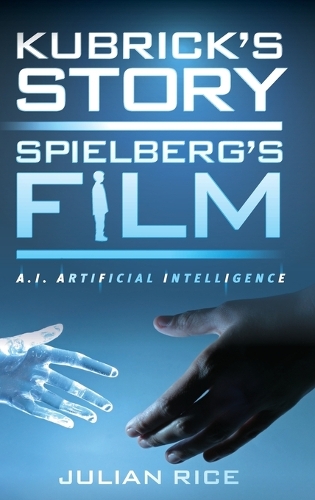
Kubrick's Story, Spielberg's Film: A.I. Artificial Intelligence
(Hardback)
Publishing Details
Kubrick's Story, Spielberg's Film: A.I. Artificial Intelligence
By (Author) Julian Rice
Bloomsbury Publishing PLC
Rowman & Littlefield Publishers
16th June 2017
United States
Classifications
General
Non Fiction
791.430233092
Physical Properties
Hardback
308
Width 158mm, Height 237mm, Spine 27mm
585g
Description
In 1963 Stanley Kubrick declared, Dr. Strangelove came from my desire to do something about the nuclear nightmare. Thirty years later, he was preparing to film another story about the human impulse for self-destruction. Unfortunately, the director passed away in 1999, before his project could be fully realized. However, fellow visionary Steven Spielberg took on the venture, and A.I. Artificial Intelligence debuted in theaters two years after Kubricks death. While Kubricks concept shares similarities with the finished film, there are significant differences between his screenplay and Spielberg's production. In Kubricks Story, Spielbergs Film: A.I. Artificial Intelligence, Julian Rice examines the intellectual sources and cinematic processes that expressed the extraordinary ideas of one great artist through the distinctive vision of another. A.I. is decidedly a Kubrick film in its concern for the future of the world, and it is both a Kubrick and a Spielberg film in the alienation of its central character. However, Spielbergs alienated characters evolve through friendships, while Kubricks protagonists are markedly alone. Rice explores how the directors disparate sensibilities aligned and where they diverged. By analyzing Kubricks treatment and Spielbergs finished film, Rice compares the imaginations of two gifted but very different filmmakers and draws conclusions about their unique conceptions. Kubricks Story, Spielbergs Film is a fascinating look into the creative process of two of cinemas most profound auteurs and will appeal to scholars of film as well as to fans of both directors.
Reviews
Rice, a retired English professor, takes a deep dive into the 2001 film A.I. Artificial Intelligence, concentrating on its background as a Stanley Kubrick project taken over by Steven Spielberg after Kubricks death. The writing is dense and scholarly, yet consistently inviting to the non-specialist. Throughout the text, Rice teases out the films thematic concerns and their resonances with other films in both Spielberg and Kubricks oeuvres, particularly Spielbergs Close Encounters of the Third Kind, the work that created the initial bond between the two filmmakers; 2001: A Space Odyssey, Kubricks other, notably bleaker reflection on artificial intelligence; and the apocalyptic vision of Kubricks Dr. Strangelove. Rices work is eclectic and wide-reaching, with equal insight brought to bear on A.I.s roots in Arthurian legend, Joseph Campbells concept of the heros journey, and Jungian archetypes, as well as its legacy as a cautionary tale about global warming. This eloquently written book will foster a deeper appreciation for a unique posthumous collaboration between two celebrated filmmakers, even for readers who arent fervent fans of the film itself. * Publishers Weekly *
If there was ever a movie with a back-story worthy of a fascinating book, it's A.I.[I]t's a deeply detailed analysis of each director's narrative and visual ideals, delving deep into both filmographies to pull out similar imagery and themes which may have ultimately shaped the film that was finally released (two years after Kubrick's death). The author's recurring argument is that the directors shared more common ground than their reputations suggest. While A.I. is indeed analyzed in great detail - both narratively and aesthetically - other chapters look back to such work as Close Encounters, Dr. Strangelove, even the original novel of Pinocchio, in search of recurring themes like the apocalypse and parent/child relationships. [For] those whose appreciation of either director extends beyond their films' mere entertainment value. * Free Kittens Movie Guide *
Author Bio
Julian Rice, now retired, was professor of English at Florida Atlantic University. He is the author of Kubricks Hope (Scarecrow, 2008) and The Jarmusch Way (Scarecrow, 2012).
